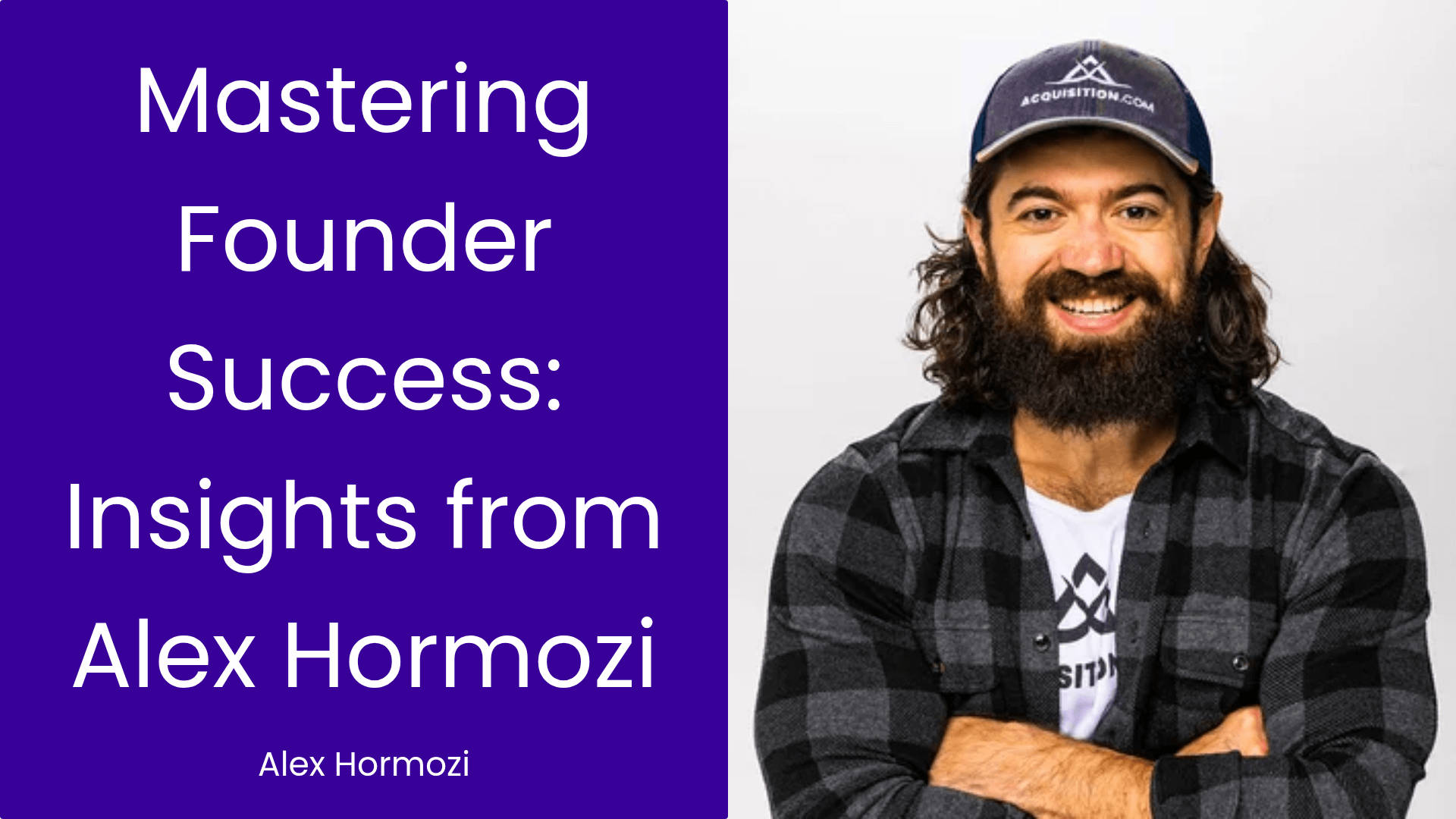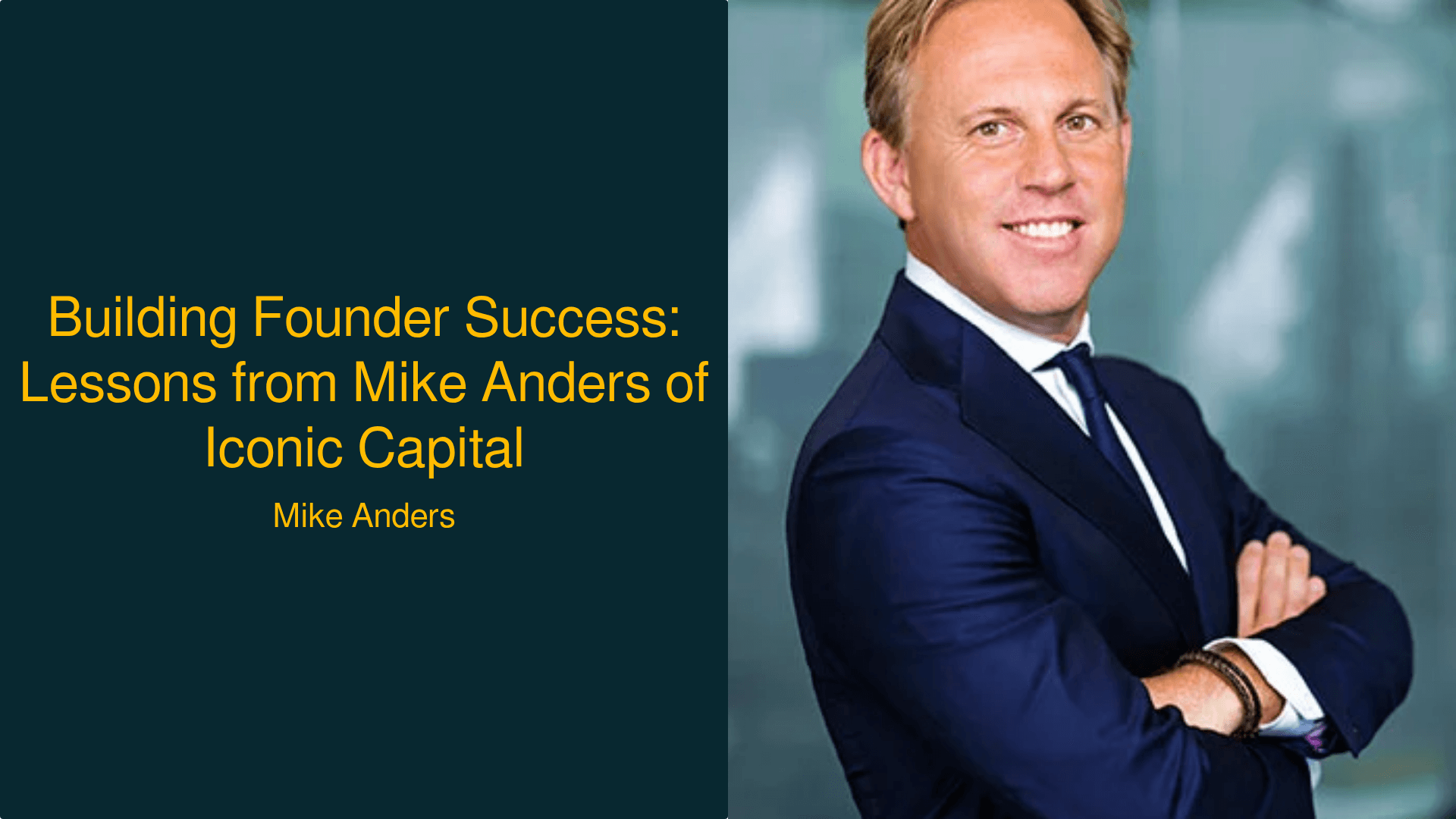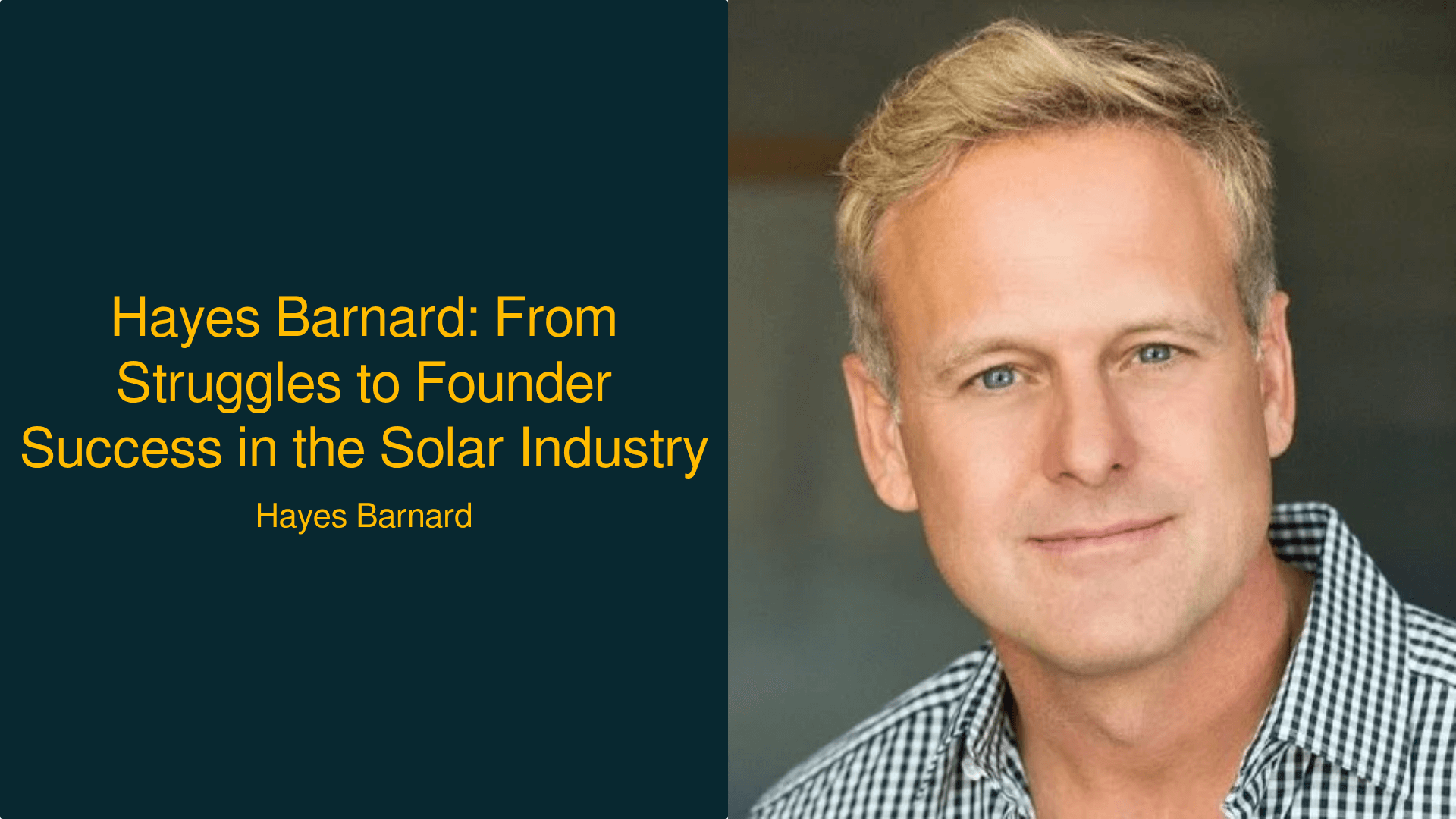Mastering Founder Success: Insights from Alex Hormozi
Unlock actionable strategies for founder success with insights from Alex Hormozi on business models and customer acquisition.

Mastering Founder Success: Insights from Alex Hormozi
In the ever-evolving landscape of entrepreneurship, the path to founder success often hinges on a blend of innovative thinking, strategic execution, and a profound understanding of customer dynamics. Alex Hormozi, widely recognized as the ‘Hundred Million Dollar Man’, has garnered immense respect as a thought leader in business growth strategies. His wealth of experience, combined with the insights shared in his latest book, ‘Money Models’, positions him as an authoritative voice for entrepreneurs seeking actionable guidance. In this article, we delve into the key takeaways from a recent discussion with Hormozi, highlighting essential frameworks and strategies that can propel founders towards success. As we explore the intricacies of business models, customer acquisition, and the importance of mindset, readers will gain valuable insights to enhance their entrepreneurial journey and ultimately achieve founder success.
The Power of Money Models in Business
You can’t have X without Y. — Alex Hormozi
Why it matters: Understanding money models can drastically improve a business’s revenue potential. By strategically sequencing offers, businesses can enhance their customer journey and significantly increase their revenue per customer. This approach not only maximizes immediate income but also lays the groundwork for sustainable growth. For instance, Hormozi’s experience in the gym industry revealed that offering a challenge program upfront generated higher initial revenue, allowing him to finance customer acquisition much more effectively than traditional low-ticket offers. This methodology can be applied across various industries, emphasizing the critical role of innovative offer structures in achieving founder success.
How to Apply This
- Identify your primary offer and determine complementary products or services that enhance customer value.
- Map out the customer journey to understand where upsells and cross-sells can naturally fit into the purchasing process.
- Test different pricing structures and promotional strategies to see which combinations yield the highest conversions.
- Analyze the performance of each offer and adjust your approach based on customer feedback and data.
- Continually iterate on your money models to ensure they align with changing market conditions and customer needs.
Client-Financed Acquisition: A Game-Changer
One user pays for the next user. — Alex Hormozi
Why it matters: The concept of client-financed acquisition revolutionizes how businesses approach customer acquisition costs. By ensuring that the gross profit from initial sales exceeds the cost of customer acquisition and service delivery, entrepreneurs can create a self-sustaining cycle where each new customer helps fund the acquisition of more customers. This principle not only boosts profitability but also minimizes the reliance on external funding sources, giving founders greater control over their business growth. Hormozi’s success in rapidly scaling his ventures can be attributed to this strategic approach, enabling him to reinvest profits back into customer acquisition for accelerated growth.
How to Implement Client-Financed Acquisition
- Calculate your current customer acquisition cost (CAC) and ensure you have a clear understanding of all associated expenses.
- Develop a pricing strategy that allows you to recoup CAC within the first 30 days through initial sales.
- Create compelling offers that incentivize customers to make larger upfront payments, thereby increasing initial cash flow.
- Monitor and optimize your sales funnel to ensure that each stage contributes positively to the customer acquisition and retention process.
- Use customer feedback and performance metrics to refine your offerings and enhance customer experience.
Timing Your Offers for Maximum Impact
You want to sell at the point of greatest deprivation, not the point of greatest value. — Alex Hormozi
Why it matters: Timing is crucial when it comes to making offers to customers. Hormozi emphasizes that sellers should aim to present upsells at moments when the customer feels the highest need or deprivation. This approach ensures that the offer resonates deeply with the customer’s current emotional state, leading to increased acceptance rates. By strategically planning the timing of offers, businesses can significantly enhance their revenue potential while also improving customer satisfaction. Hormozi’s insights on this topic encourage entrepreneurs to be more mindful of their customers’ experiences and needs throughout the purchasing process.
How to Optimize Timing for Offers
- Analyze customer interactions and identify key moments in the purchasing journey when customers exhibit high emotional engagement.
- Develop targeted offers that align with these critical moments, addressing specific pain points or needs.
- Train your sales team to recognize these moments and seize opportunities to present offers effectively.
- Use marketing automation tools to trigger upsell offers based on customer behavior and engagement metrics.
- Continuously evaluate the effectiveness of your timing strategies and adjust as necessary to maximize conversions.
The Upsell Strategy: Turning First-Time Buyers into Loyal Customers
It’s easier to get the second yes after you get the first yes. — Alex Hormozi
Why it matters: Hormozi’s insights on upselling highlight the importance of building on initial customer trust. Once a customer has made a purchase, they are more likely to say yes to additional offers. By strategically designing upsell opportunities that naturally follow the initial purchase, businesses can significantly enhance their average revenue per customer. This strategy not only increases immediate sales but also fosters long-term customer loyalty as customers perceive added value in the ongoing relationship. Hormozi’s success with upselling demonstrates the power of structured sales processes that prioritize customer satisfaction and value.
How to Implement an Effective Upsell Strategy
- Identify key products or services that complement the initial purchase and add value to the customer’s experience.
- Craft upsell offers that are clear, compelling, and demonstrate the benefits of additional purchases.
- Train your sales team to present upsells in a way that feels natural and beneficial, rather than pushy.
- Use customer data to personalize upsell offers, making them more relevant and appealing to individual customers.
- Monitor the success of your upsell strategies and iterate based on customer feedback and sales performance.
Building a Resilient Entrepreneurial Mindset
You probably recognize this guy, Alex Hormozi. He’s known as the Hundred Million Dollar Man. — null
Why it matters: Mindset plays a pivotal role in founder success. Hormozi’s journey showcases the importance of resilience, adaptability, and a willingness to learn from failures. Entrepreneurs often face numerous challenges and setbacks, and cultivating a strong mindset is essential for navigating these obstacles. By embracing a growth-oriented mindset, founders can foster innovation, inspire their teams, and ultimately drive their businesses toward success. Hormozi’s experiences serve as a reminder that the journey of entrepreneurship is as much about personal development as it is about business strategy.
How to Cultivate a Resilient Mindset
- Reflect on past challenges and identify the lessons learned that can inform your future decisions.
- Surround yourself with a supportive network of mentors and peers who can offer guidance and encouragement.
- Practice mindfulness and self-awareness to better manage stress and maintain focus on your goals.
- Set clear, achievable goals that align with your vision and break larger objectives into manageable tasks.
- Embrace failure as a learning opportunity and cultivate a mindset that values growth and resilience.
Conclusion
In conclusion, the insights shared by Alex Hormozi provide a powerful roadmap for founders seeking success in their entrepreneurial endeavors. By mastering money models, embracing client-financed acquisition, timing offers strategically, implementing effective upsell strategies, and cultivating a resilient mindset, entrepreneurs can significantly enhance their chances of building thriving businesses. Hormozi’s journey serves as an inspiration for all aspiring founders, reminding us that success is not merely about financial gains but also about creating value for customers and fostering meaningful relationships. As you navigate your entrepreneurial path, consider these lessons and frameworks as guiding principles to unlock your own founder success.


